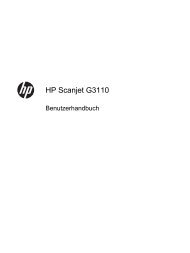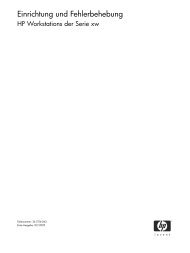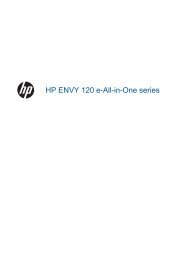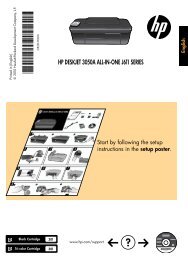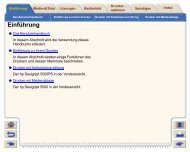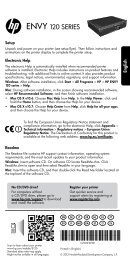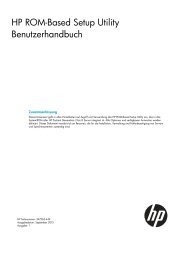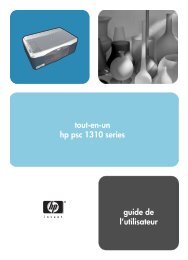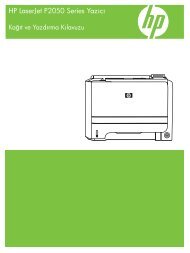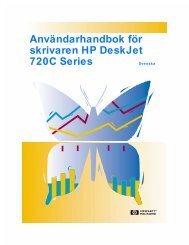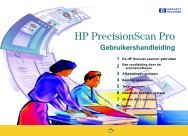HP LaserJet P2015 Printer Software Technical Reference - ENWW
HP LaserJet P2015 Printer Software Technical Reference - ENWW
HP LaserJet P2015 Printer Software Technical Reference - ENWW
You also want an ePaper? Increase the reach of your titles
YUMPU automatically turns print PDFs into web optimized ePapers that Google loves.
The <strong>HP</strong> <strong>LaserJet</strong> <strong>P2015</strong> supports the transmit-once mopying feature when the Mopier Mode: setting<br />
on the Device Settings tab is Enabled.<br />
When you use the <strong>HP</strong> PCL 6 Unidriver, <strong>HP</strong> PCL 5e Unidriver, or PS 3 Emulation Unidriver, mopying is<br />
performed in one of two ways: either through the software or through the device hardware. When the<br />
mopier is enabled, mopying takes place through the device hardware by default. One copy of a multiplepage<br />
print job is transmitted once through the network to the device, together with a printer job language<br />
(PJL) command directing the device to make the specified number of copies.<br />
When you disable the mopier, you are not necessarily disabling mopying, which the driver can still<br />
perform through the software rather than the device hardware (the mopying path that is disabled when<br />
you change the Mopy Mode setting to Disabled). However, a multiple-copy print job that is sent when<br />
the mopier is disabled loses the advantage of transmitting the print job once, because the job is sent<br />
through the network for each copy.<br />
Mopier mode and collation<br />
Mopying and collating print jobs are independent but closely related functions. Mopying, the ability to<br />
send original print jobs to the device, is performed by the print driver. Collating can be controlled by<br />
either the print driver or the document software program. The mopying mode is selected by default in<br />
the driver, and can be disabled by changing the Mopier Mode setting on the Device Settings tab to<br />
Disabled.<br />
Control collation through the print driver by selecting or clearing the Collated check box on the<br />
Advanced tab. You can clear the check box, which is available only when the Copy Count option is<br />
set to more than 1 copy, to allow the software program to control collation.<br />
To receive uncollated multiple copies of a print job, clear the Collated check box and make sure that<br />
the software program collation feature is not selected.<br />
The following table shows the relation between mopier mode settings and collation settings in the<br />
software program and the driver. The first three columns show the settings; the last column, "Expected<br />
result", shows how a 3-page print job would appear.<br />
Table 4-5 Driver mopier mode and collation settings<br />
Mopier mode Application collation Driver collation Expected result<br />
Disabled Not selected Not selected 3 copies uncollated<br />
Disabled Not selected Selected 3 copies uncollated<br />
Disabled Selected Not selected 3 copies collated<br />
Disabled Selected Selected 3 copies collated<br />
Enabled Not selected Not selected 3 copies uncollated<br />
Enabled Not selected Selected 3 copies uncollated<br />
Enabled Selected Not selected 3 copies collated<br />
Enabled Selected Selected 3 copies collated<br />
Postscript Passthrough (PS 3 Emulation Unidriver only)<br />
Postscript Passthrough is enabled by default, and must be enabled for most print jobs. Postscript<br />
passthrough provides additional capabilities for some software programs when printing to a postscript<br />
driver. Options such as Watermarks, n-up and Booklet Printing might not print correctly from some<br />
192 Chapter 4 <strong>HP</strong> PCL 6, PCL 5, and PS emulation unidrivers for MS Windows <strong>ENWW</strong>



